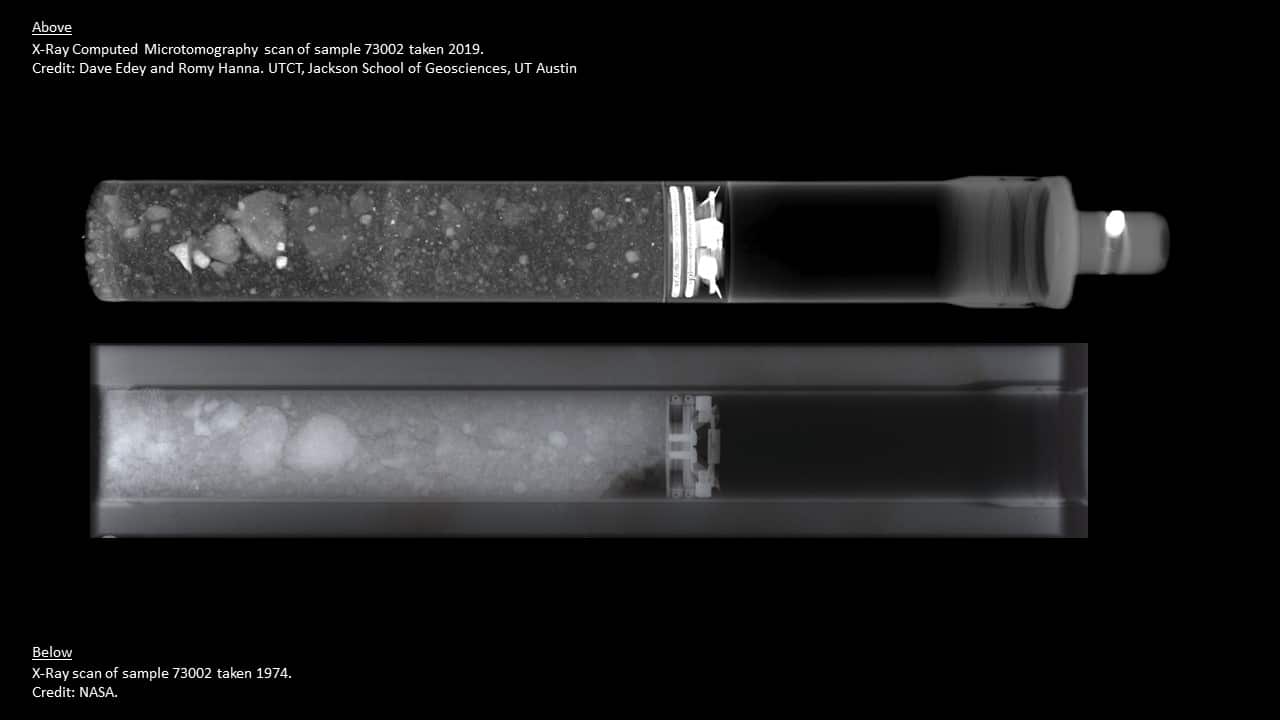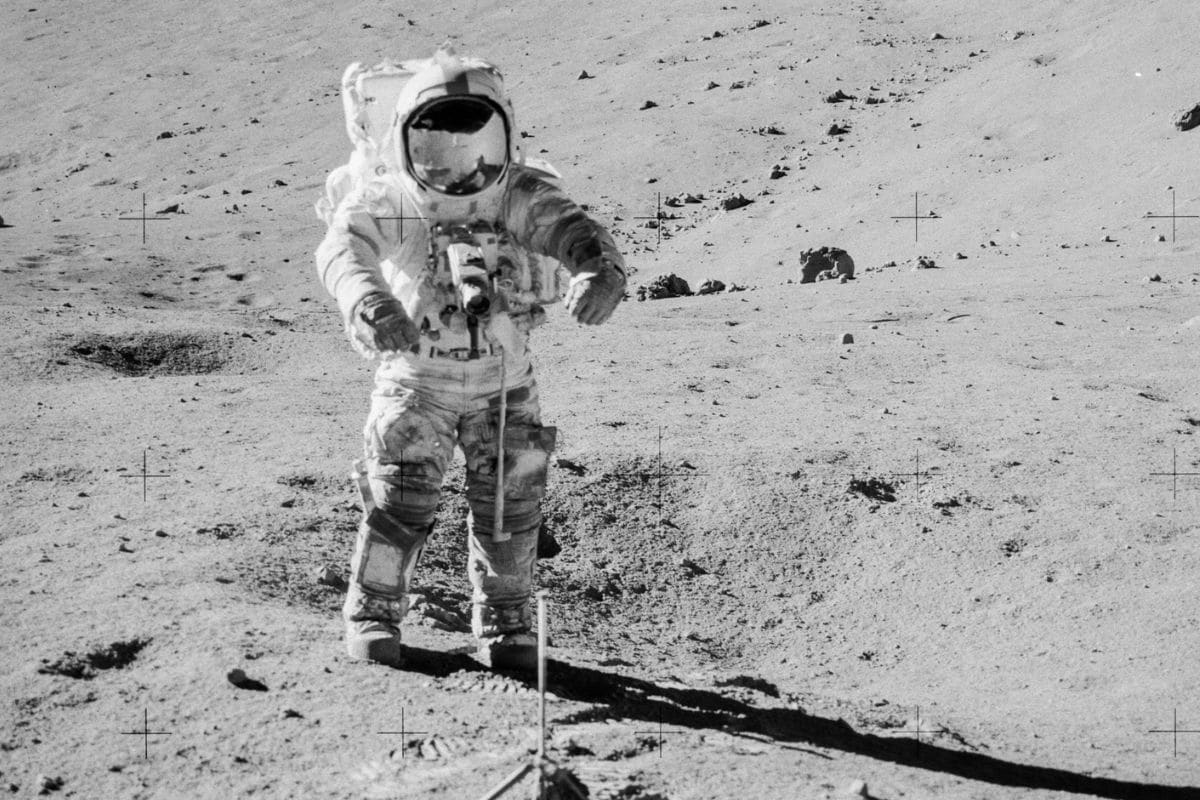Hopefully, the monster can learn more about the moon and provide new knowledge about the best way to sample the moon now.
In 1972, astronauts hammered a 70-centimeter tube into the lunar surface to get a core of lunar regolith. The top of the drill core was stored in a tube and returned to the ground. But the lower part was subjected to special treatment: this part of the drill core was immediately stored in a vacuum in a specially developed tube and carefully sealed before being transported to the ground. This makes it a unique moon monster. During the famous Apollo missions, only two lunar samples were obtained and stored in this way. What’s also special is that the lunar samples are still sealed and unstudied to this day.
Open
But this is about to change. Because researchers are working on opening the 50-year-old lunar sample that astronauts collected on the moon in 1972 and stored in a vacuum. An exciting moment, in which a leading role is assigned to Apollo Next Generation Sample Analysis SoftwareA research team hopes to learn more about the moon using today’s technologies and techniques than anyone could have dreamed of in 1972.
Astronaut Gene Cernan prepares to collect a lunar sample for analysis 50 years later. Photo: NASA.
part two
In 2019, the research team has already opened the top of the lunar sample obtained in 1972 (also referred to as 73002). But now it’s time for the lower part, which is also referred to as the lunar sample 73001. Because this sample was obtained at a greater depth, the temperature at which this part of the core was drilled was also much lower. So low, in fact, the researchers hope that this part of the lunar sample contains volatiles that evaporate at normal or higher temperatures (think water ice and carbon dioxide). However, if these volatile gases are present in the sample, they are likely to be in very small amounts. The challenge now is to extract those gases from the lunar sample and then analyze and identify them.
Modern technology
This was probably unimaginable in the 1970s, because it required highly sensitive equipment that could very accurately measure the mass of unknown molecules and reveal what kind of molecules we are dealing with. Fortunately, this technology will be available in 2022 and will be released on the unique lunar sample 73001. With the help of this technology, not only accurate measurements can be made, but also it should be possible to measure the gas obtained – and again: it is possible That very small quantities be broken into smaller parts and then distributed to a larger group of scientists, and then each of those researchers can do further research in a different way.

What modern technology can do: an X-ray examination of the lunar monster 73002 in 1974. Above a CT scan of the same sample in 2019.
“NASA has learned that science and technology will advance and will allow future scientists to study materials in new ways and answer new questions,” said Laurie Glaze, NASA administrator. Planetary sciences department† That is why already in the Apollo era it was decided not to analyze all collected lunar samples at once, but to keep some samples for later. This unique moon monster is one of them. It is one of the last unopened lunar monsters.
time consumption
Although we will be able to study this monster in new ways and with new technologies in 2022, analyzing it remains a time-consuming process that has taken years. For example, researchers at the University of Washington in recent years have developed a device that can carefully extract gas from a lunar sample and store it. Meanwhile, researchers from the European Space Agency have been working on an instrument that can penetrate the channel containing a highly valuable lunar sample without escaping gas. “This instrument is a unique system, created only to unlock the so-called Apollo sample 73001,” researcher Timon Shield said earlier.
patience
In general, it will take months for scientists to fully analyze the lunar sample. At the end of last month, the perforation of the channel and the collection of gases was started. NASA said that could take several weeks. And only when all the gases have been removed from the lunar sample, can additional analysis of the lunar soil stored in the same sample also be performed. So our patience is at stake. But after fifty years of waiting, those few extra months can of course be added.
The findings not only provide further insight into the region where astronauts wandered fifty years ago, but also have implications for the future. Because NASA wants to send people to the moon again in the short term during the so-called Artemis missions. “A better understanding of the geological history and evolution of lunar samples collected from the Apollo landing areas will help us better prepare for the samples that we will encounter during the Artemis missions,” said NASA Administrator Thomas Zurbuchen. The purpose of the Artemis missions is to collect cold, sealed samples near the south pole of the Moon. And this (Apollo Samples Study, ed.) is an exciting way to learn about the tools needed to collect, transport, analyze and store these samples on Earth for future generations of scientists. “
The first manned Artemis mission was originally planned for 2024 and should take an astronaut to the Moon for the first time. It is now clear that 2024 is a bit ambitious; Last year the mission was postponed – in part due to the development of appropriate clothing for the moon – It was only possible in 2025 at the earliest† A few weeks ago, NASA announced through Inspector General Paul Martin that another delay was inevitable and that the first woman would not set foot on the moon until 2026 at the earliest. Once again it comes to the development of spacesuits. In addition, he also plays The legal battle over who can now build a lunar lander on behalf of NASA – SpaceX or Blue Origin – role. Although the issue was settled by a court in November last year, it meant that work on the lunar lander was halted for some time.

“Thinker. Coffeeaholic. Award-winning gamer. Web trailblazer. Pop culture scholar. Beer guru. Food specialist.”







More Stories
Sony is rolling out a new PlayStation 5 system update that includes a handy Community Guide feature
Telltale Games shares new footage from The Wolf Among Us 2
Lenovo launches new “AI-ready” ThinkPad workstations.